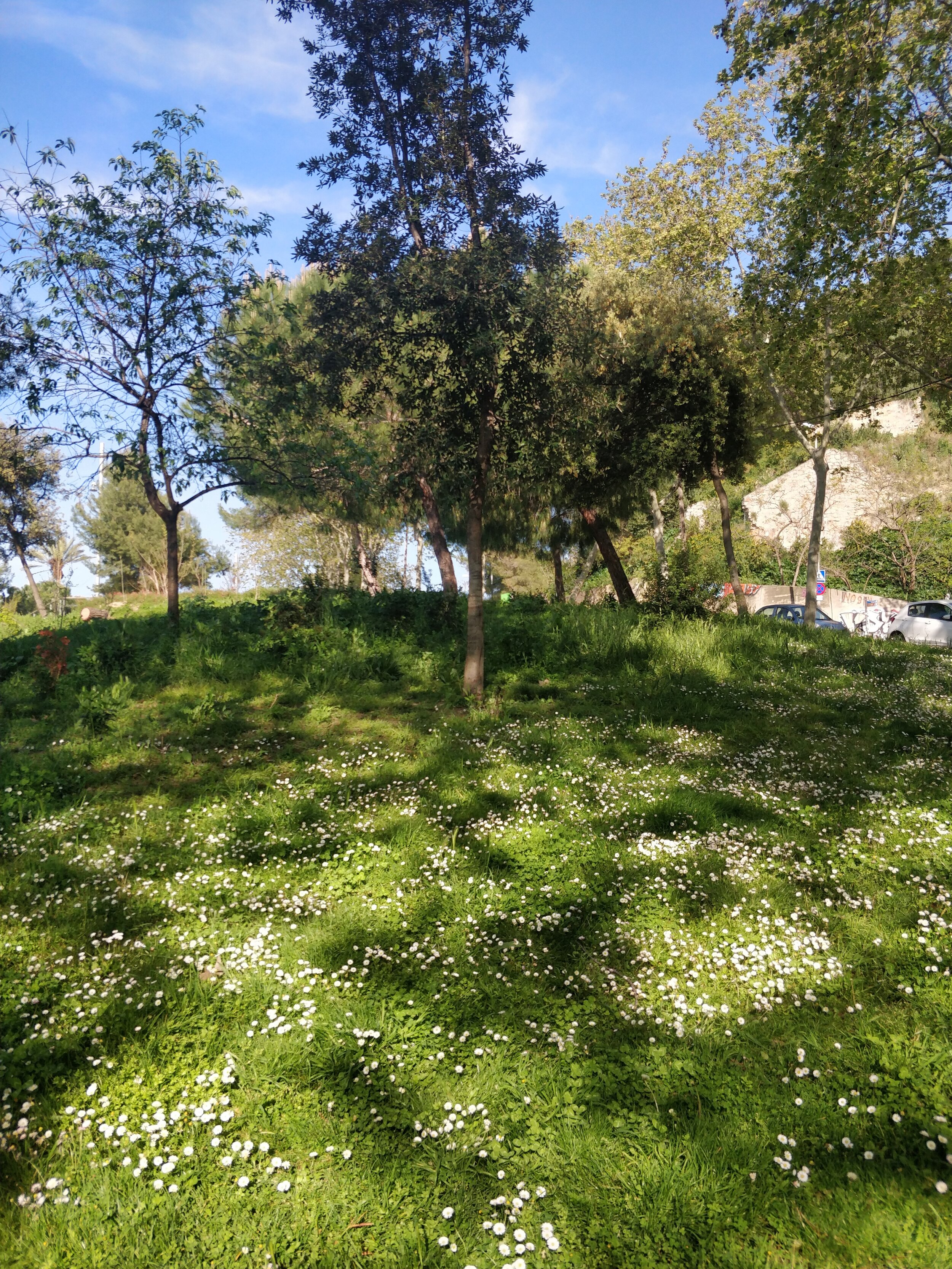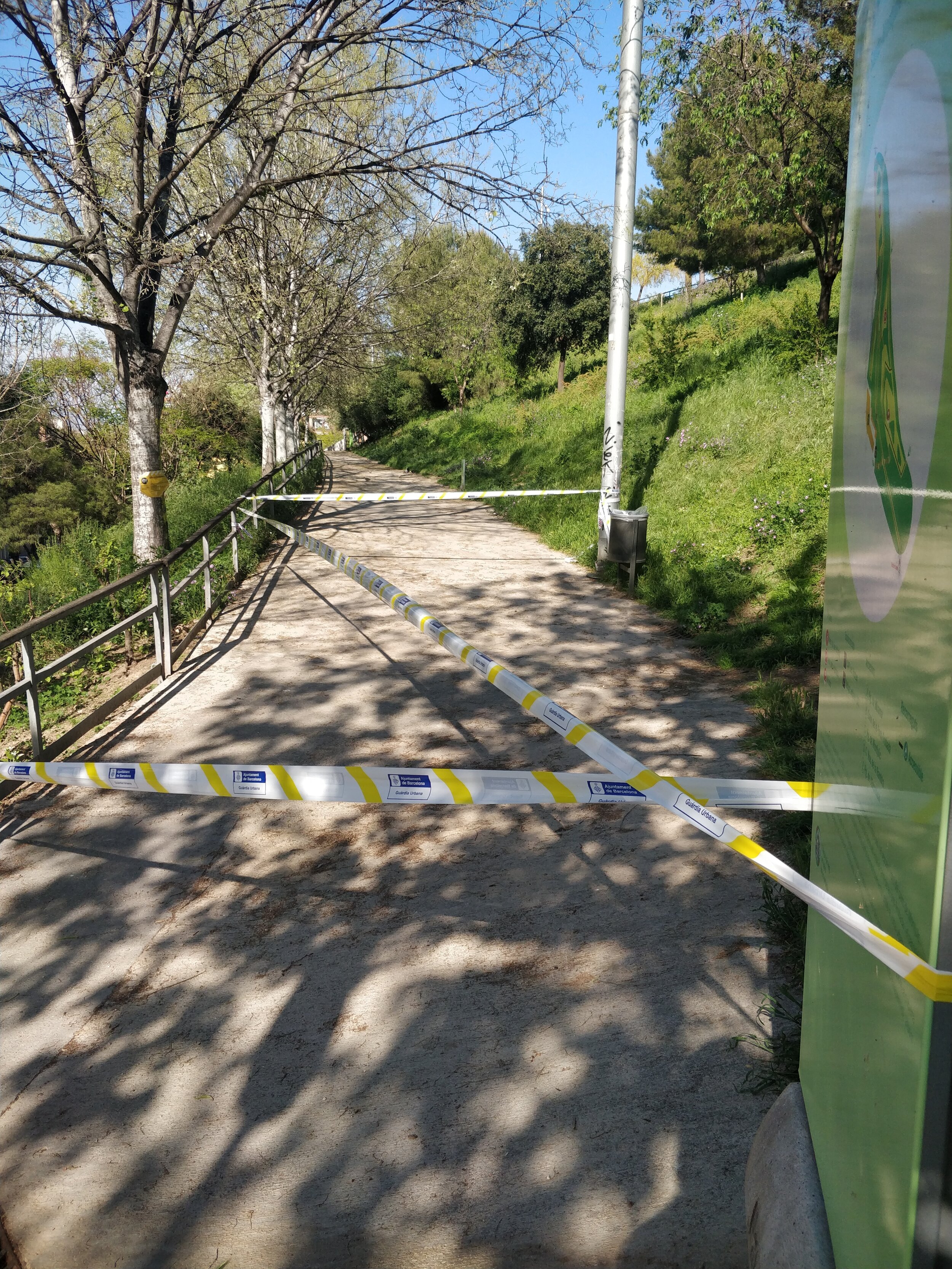Our considerations of airborne proliferation have to include the possibility of pathogens -which brings us to this, the pandemic stage of the project. During their time in lockdown - Alfred in Manila and Tsering in Barcelona - have been communicating more and more about things that are carried on the wing. Seeds, pollens, parasites, viruses.
Every day at the same time, Tsering walks her dog to the same nearby patch of grass in an otherwise closed park. During these walks she she has been recording the birds for approximately 40 seconds and sending it to Alfred - sometimes with a photograph to capture something about that minor outing. Now that the park is closed to people, it is abundant with birds and they are louder than ever. These recordings and photos will continue while Barcelona is still in lockdown.
The possibility that something like the Covid-19 pandemic happening has been researched and forewarned for some time, and, maybe not surprisingly, with a considerable focus on birds. These beautiful feathered creatures, whose song characterises our proximity to nature, have actually been under epidemiologists' scrutiny and concern for decades.
Articles on avian pathogens (not in any particular order - most recently discovered first)
Ancestors of chickens studied for conservation - Economic Times (2008)
“KOLKATA: The ancestors of domestic chickens and poultry are being conserved and studied by scientists in case the domestic birds are eradicated by outbreak of diseases like bird flu.”
Tick-infested songbirds help spread Lyme disease - Prairie Research Institure Illinois (2017)
"Researchers studied songbirds and their foraging habitats to determine which environmental factors affect bird-tick encounters and the dispersal of ticks in Illinois. Birds are known to move ticks long distances and play a role in spreading the black-legged tick (Ixodes scapularis), a primary vector of Lyme disease."
Bird Migration Routes and Risk for Pathogen Dispersion into Western Mediterranean Wetlands - Elsa Jourdain, Michel Gauthier-Clerc, Dominique Bicout, and Philippe Sabatier (2007)
"...data about avian movements might be used to improve disease surveillance schemes or to adapt preventive measures. However, solid bridges between ecology and human medicine are still lacking."
New host species for avian influenza identified - Phys.org (2007)
“An eight-year surveillance study, which included more than 36,000 wild migratory birds tested for low pathogenic avian influenza, details new data on host species, prevalence, and temporal and geographical variation of avian influenza in wild migratory birds in Europe.”
How Has Human Sprawl Affected Bird Migration—And the Spread of Avian Diseases? - Scientific American (2010)
“As humans populate formerly wild regions, they increasingly intersect bird migration patterns. Will greater human and domesticate animal proximity to wild avian life escalate incidents of disease transmission? “
Borne on the Wing: Avian Influenza Risk in U.S. Wild Songbirds Mapped - Phys.org (2010)
“Scientists have discovered that 22 species of passerines--songbirds and perching birds--in the contiguous U.S. are carriers of low-pathogenicity avian influenza.”


















